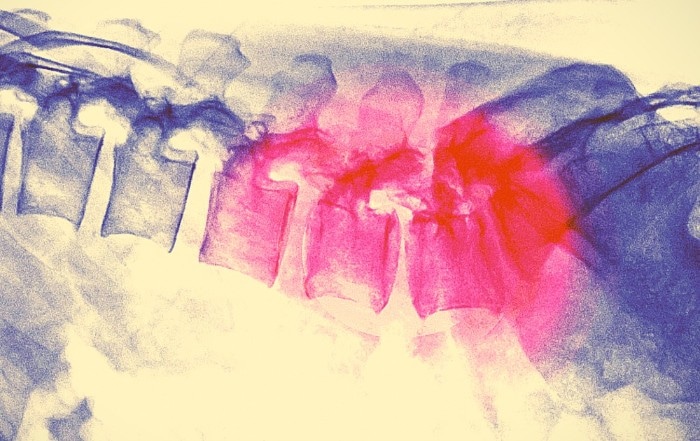The zealous immune response to injuries is known to cause paralyzing damage in spinal cord injury (SCI).
 Bioengineers designed nanoparticles that lure immune cells away from spinal cord injuries, resulting in less damaging inflammation. In addition, the smaller number of immune cells that arrive at the injury site switch to an anti-inflammatory profile and produce factors that promote regenerative healing that can preserve function. (Image credit: iStock)
Bioengineers designed nanoparticles that lure immune cells away from spinal cord injuries, resulting in less damaging inflammation. In addition, the smaller number of immune cells that arrive at the injury site switch to an anti-inflammatory profile and produce factors that promote regenerative healing that can preserve function. (Image credit: iStock)
Engineers have now created unique nanoparticles that redirect immune cells away from the spinal cord, promoting regeneration that helped restore spinal cord function in mice. The study was funded by the National Institute of Biomedical Imaging and Bioengineering (NIBIB).
The spinal cord, similar to the brain, has a blood-brain barrier that guards the fragile nerves against possible damage from numerous assaults; for example, it blocks immune cells from migrating to the site of injury to clean up debris.
This blood-brain barrier gets damaged when a traumatic injury occurs in the spinal cord, and the quick influx of immune cells produces an environment that tries to rapidly shore-up the injury but, at the same time, blocks regenerative processes that can effectively reconstruct and reconnect fragile damaged nerves.
Now, a method has been developed by NIBIB-grantee Lonnie Shea, PhD, the Steven A Goldstein Collegiate Professor, Biomedical engineering, and his coworkers at the University of Michigan in Ann Arbor to overcome this problem.
This technique involves redirecting several immune cells away from the site of injury and simultaneously inducing those cells that do reach the SCI to change to an anti-inflammatory profile. This creates factors that promote a regenerative healing process, which can help restore function.
The novel method has been reported in the July edition of the Proceedings of the National Academy of Sciences.
Although the immune response is attempting to do its job, rushing to the site of a SCI. The rapid removal of injured cells and repair of the damaged area by immune cells often results in a buildup of fibrotic tissue that essentially fills the wound with structural cells that are not functional neurons. Recognizing this, the Michigan engineers have designed an approach that reduces immune cells at the site of the spinal injury, while also promoting greater regeneration.
David Rampulla, PhD and Program Director, Delivery Systems and Devices for Drugs and Biologics, NIBIB
Nanoparticles designed by the Michigan team can be directly administered into the bloodstream following an injury to the spinal cord.
These nanoparticles use a number of easy mechanisms that enable them to reprogram the immune cells—that is, they imitate the tiny size of cell debris which causes the immune cells to engulf the nanoparticles.
Moreover, the nanoparticles are negatively charged, which allows binding to the immune cells that are positively charged. Immune cells that are lured away from the spinal cord are eventually sequestered in the spleen, which helps in filtering out debris and recycle both white and red and blood cell components.
Although a few cells do dodge the diversion by nanoparticles, there is still a considerable reduction in the number of immune cells entering the injured site.The lesser number of immune cells makes the cells to change from an inflammatory function to a regenerative function that supports the subtle regenerative healing process promoting reconnection and growth of the affected neural networks.
The researchers subsequently tested the nanoparticles in a mouse SCI model, where they noticed increased regenerative processes and reduced fibrosis. Furthermore, functional studies revealed that mice displayed improved locomotor function after they received the nanoparticle therapy.
We hope these encouraging results could lead to a novel treatment for many of the 12,000 new spinal injury patients in the US each year. In addition, this nanoparticle technology may have applications in treating the significant number of diseases that are caused by an immune response ranging from arthritis to sepsis.
Lonnie Shea, PhD and the Steven A Goldstein Collegiate Professor, Biomedical Engineering, University of Michigan
NIH Grants R01EB005678 and R01EB013198 from the National Institute of Biomedical Imaging and Bioengineering supported the study.
Source: https://www.nibib.nih.gov/

